
Are you looking to learn a new language or get more in-depth with one you already know? This article will help you identify the best language-learning app for you.
| Babbel | Best comprehensive curriculum |
| Duolingo | Best free language app |
| Promova | Best for in-depth learning |
| Rosetta Stone | Best immersive environment |
| Memrise | Best for pronunciation |
| Lingvist | Best for fast learning |
| Mondly | Best for confident speaking |
| LingoDeer | Best for Asian languages |
| HelloTalk | Best for conversations |
Learning a new language can help you open up new opportunities in your career, advance your academic journey, or simply order food when traveling to a new country. So whether you’re looking to learn French, Spanish, Italian, Japanese, or Arabic, choosing the best tools is key.
Language learning apps are a great way to start learning a new language or complement school/online courses. They can make the learning process easier and more enjoyable.
9 Best Language Learning Apps in 2024
What is the best way to learn a language?
There is no right way to learn a language as each individual is unique. Instead, you need to discover what works best for you.
If you want to start learning a new language, you can start with an app for language learning. This environment will help you feel less confused and overwhelmed. The best language learning programs will help you to grasp and master basic vocabulary relatively fast to put together a simple conversation when ordering food in a restaurant, for example.
However, if you want to learn a new language for a new role across the ocean or for academic purposes, you may want to complement app learning with comprehensive courses, films, and books. And maybe even a tutor.
We need to be honest with ourselves: going from beginner to advanced or proficient user takes time and commitment.
The process of learning a new language always includes these five pillars:
- Grammar.
- Listening and picking up on vocabulary.
- Practicing pronunciation.
- Writing to become confident in business or academic environments
- And speaking to prepare for real-world conversations.
What’s the best app to learn languages?
My advice is to take a moment, reflect, and identify your learning style, and then choose the best app that suits your personality.
Each app has developed its unique teaching method and, just like in life, it’s important to find the one that works best for you.
I’ve tried and tested several tools to see what each has to offer and I’ve put together this list of recommended best language learning apps. Here’s what I considered in my analysis:
- Teaching method.
- Learning environment.
- Interface.
- Resources.
- Live tutoring.
- Online classes.
Hope you find the best language-learning platform for you.
Babbel
🏆 Best comprehensive curriculum



Babbel is an AI-powered language-learning app that offers lessons in 14 languages. Babbel was created by a team of expert language experts (and you can tell that!), and they claim their method is backed by researchers at Yale University.
The platform uses AI-powered technology to customize lessons to the user’s level and learning goals. Babbel offers a unique range of features, including voice recognition and interactive conversations with native speakers.
Probably the best thing about this platform is that they give you access to their huge database of learning resources like videos, original podcasts, and even a magazine in 14 languages. I think that’s truly helpful, as I’ve found myself confused many times trying to learn Italian, simply didn’t know where to start and how to look for Italian videos or magazines.
For this reason, I believe Babbel to be the one of the best language-learning software on the market.
If you want to get more in-depth and have a real school-like experience, you can do that by attending live online classes with certified teachers.
Pros:
- Personalized learning through AI-powered technology.
- Interactive conversations with native speakers allow users to practice their skills and get feedback from a real person in a real-time session.
- Voice recognition for pronunciation practice to help you improve your accent.
- Vast database of educational resources: videos and podcasts, and a magazine with articles in 14 languages.
- Live online classes.
- Lessons in 14 languages.
Cons:
- Limited number of languages covered. The platform offers courses in most of the European languages and some Asian too.
- No free plan. You can test the app’s capabilities in a 7-day free trial, though.
Duolingo
🏆 Best free language app



Duolingo is the most popular language-learning app, with 500 million registered users.
Currently, the platform offers the widest portfolio of language learning courses, covering 41 languages, at all levels, from beginner to advanced.
Duolingo is a fun way to learn a new language, consolidate your vocabulary, test your comprehension and speaking skills, and advance all the way to proficiency.
I tested Duolingo to learn Italian and found it extremely captivating. The jolly interface, the game-like learning process, and the achievements tracking, these are just a few reasons why I love using this language learning platform.
The best part about Duolingo is that it allows you to learn at your own pace by setting streaks (goals). This way you can clearly define how much time you’re willing to spend on a daily basis learning your chosen language and how many days you plan on learning to reach your objective.
The team at Duolingo certainly found a sure way to keep users engaged and motivated (addicted) by showing a visual track of progress and sending reminders to get back on the app and do your tests.
Lessons cover common social scenarios like ordering breakfast, having a date, or asking for directions while visiting a city. I also enjoy each lesson’s cultural context, where you learn about local foods or customs. Makes me feel like I’m already there!
The app is free and easy to use, but it also offers premium plans with extra features, such as conversations, offline lessons, and personalized practice.
Duolingo is not only for people looking to learn a new language. Teachers can also use the app to support their language classes in schools. If you’re a business owner, you can help your employees upgrade their language skills. Duolingo for businesses allows organizations to buy annual subscriptions for their teams.
Duolingo is probably one of the best free language learning apps.
Pros:
- Easy to use and user-friendly interface. This makes it easier to stay engaged with the lessons.
- Fun, game-like lessons with levels and rewards make the process of learning a new language more engaging and enjoyable.
- The Stories feature is an interactive way to test your comprehension skills.
- A free version is available to try and understand whether the app fits your learning style and goals.
- Offers special plans for businesses with small to large teams.
- Duolingo for school can help teachers take their class lessons to a whole new level.
- Entertaining educational podcasts.
- Super Duolingo (premium plan) unlocks Conversations and personalized practice.
Cons:
- The free plan offers access only to a limited number of features.
- Limited customization options for learning plans.
- Not as comprehensive as other language learning apps.
Promova
🏆 Best for learning a language in-depth

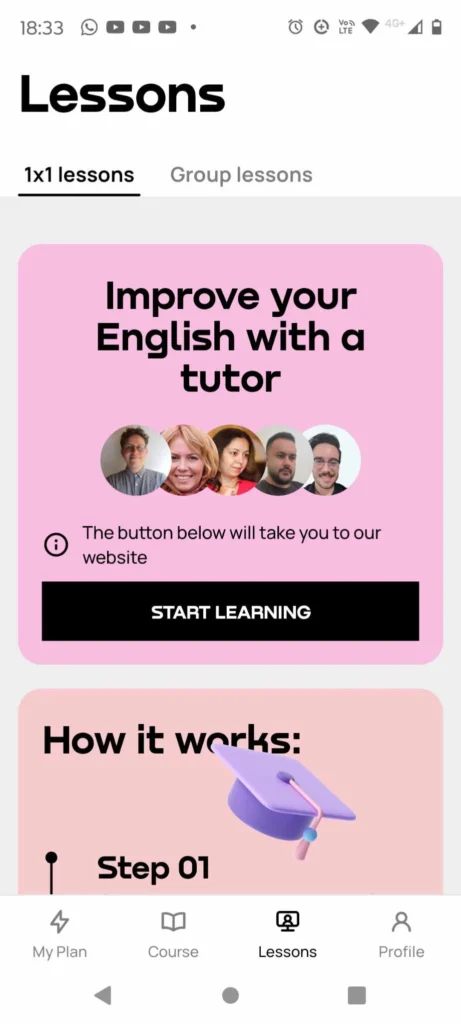

Promova is a language learning platform that offers comprehensive lessons in 15 languages.
The app is packed with AI technology, providing personalized courses and AI- teaching assistants to help you get through the lessons.
Unlike other language learning apps that will only help you acquire some basic conversational skills, Promova’s lessons can help you master your chosen language. Their lessons comprise a mix of exercises that cover listening and comprehension, reading, writing, and speaking.
You can really dive deep into the language learning environment with the Language to Language method of learning.
The app also has a built-in dictionary, so you can look up words and phrases while learning.
I took a month of premium Promova to test all of its capabilities, and here’s what I can say: Promova is a place where you can actually interact with real people, other fellow learners, have conversations in live group sessions, and hopefully, become fluent.
More, you can request a 1 on 1 lesson with a tutor to get proper personalized guidance and feedback. Unfortunately, these options are currently available only for people taking the English course.
Pros:
- Incredibly easy to navigate, especially for people who have never used a language learning program.
- The lessons are guided by AI-powered teaching assistants.
- You can create a personalized learning plan to learn at your own pace.
- Live group lessons are available for English learners, where you can practice your skills through conversations with other fellow learners.
- 1 on 1 tutoring with certified teachers which allows you to get feedback on your progress. This feature is available in the premium version, for the English course only.
- The built-in dictionary.
Cons:
• Some features are only available in the premium version
Rosetta Stone
🏆 Best immersive language learning tool

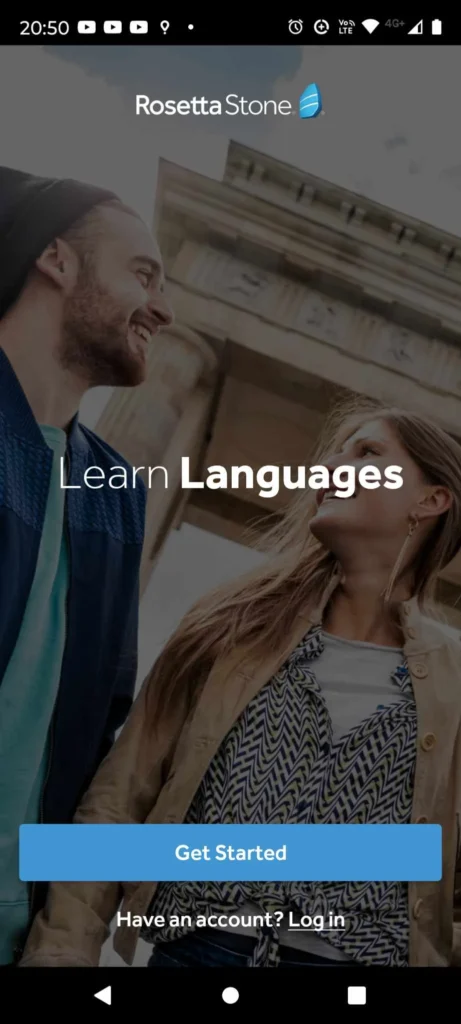

Rosetta Stone is a powerful language learning platform with courses in 24 languages. The app provides a comprehensive curriculum that includes lessons and activities for listening, speaking, pronunciation, reading, grammar, vocabulary, and writing.
Unlike other language learning programs, Rosetta Stone is an immersive learning environment, meaning you are guided to learn a new language as you would do it in real life, without English instructions or translations. Instead, you learn through context and reasoning, assigning meaning to what you see and hear. This way you can build a deeper and longer-lasting understanding of a language.
Does it seem scary? Well, all I can say is: trust the language experts at Rosetta Stone. However, you will also find games, fun activities, and interactive conversations.
It’s worth mentioning that it prides itself on being the language software of choice for 43.000 organizations and businesses worldwide. And considering that they don’t have a free plan or a free trial, it makes me think that Rosetta Stone may be targeting businesses more than individuals looking to acquire language skills.
Another thing that you won’t find with other language learning platforms is the possibility to get a language certification. And we all know how much a certification weighs in a resume!
Pros:
- AI-powered speech recognition for pronunciation practice can be useful for beginners.
- The real-life learning environment facilitates language acquisition and retention.
- Interactive conversations with native speakers to help users practice their skills and get feedback.
- Games and activities for an immersive learning experience to stay engaged in the process and don’t give up.
- AI-driven assessments.
- Broad array of language courses.
Cons:
- No live tutoring available, and unfortunately, as announced on Twitter, the company is not planning to add such an option in the nearest future.
- No free trial, which is sad, as users cannot try the app, to see if it’s suited for them.
- Subscription plans are pricey. More, there’s no monthly subscription available. You can either choose a 3-month or a 6-month subscription plan, billed as one payment. Take it or leave it.
Memrise
🏆 Best for picking up real native speaker pronunciation


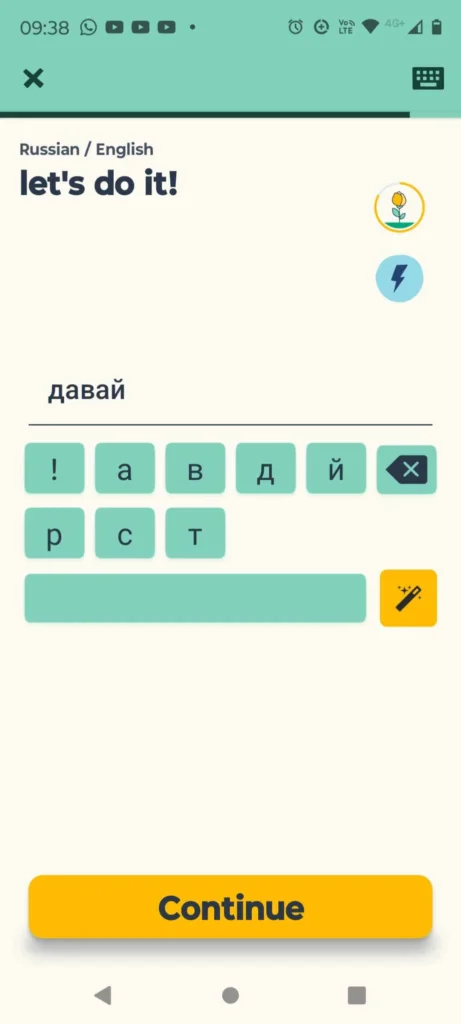
Memrise is an innovative app for language-learning app that covers 23 languages, most European languages and even complex languages like Mongolian, Japanese, or Korean, that you can rarely find anywhere.
As the name suggests, this platform uses a mix of memory techniques and AI-powered technology to help users acquire and remember new words and phrases.
I particularly like that Memrise focuses on native-speaker lessons, helping you to grasp vocabulary and pronunciation right from the locals. This is a great opportunity to discover words and phrases that people in their country actually use.
Another great thing is that you can choose videos based on your interests so that you can learn words that you need at work, school, or wherever it may be.
There are no human tutors on this platform, but instead, you can practice speaking and pronunciation with MemBot, a personalized AI language tutor. You can engage in unlimited conversations with this bot and it will provide feedback every time.
Pros:
- AI-powered technology that helps users remember new words and phrases.
- Audio lessons and vocabulary flashcards help you memorize words and phrases.
- Native speaker videos grouped by interests (48.000 videos).
- Gamified tests that train your language skills.
- Personalized reviews based on mnemonic (memory) techniques.
- Courses in 23 languages, covering even rare languages.
Cons:
- No live tutoring available.
- No live conversations with other learners.
Lingvist
🏆 Best for fast learning


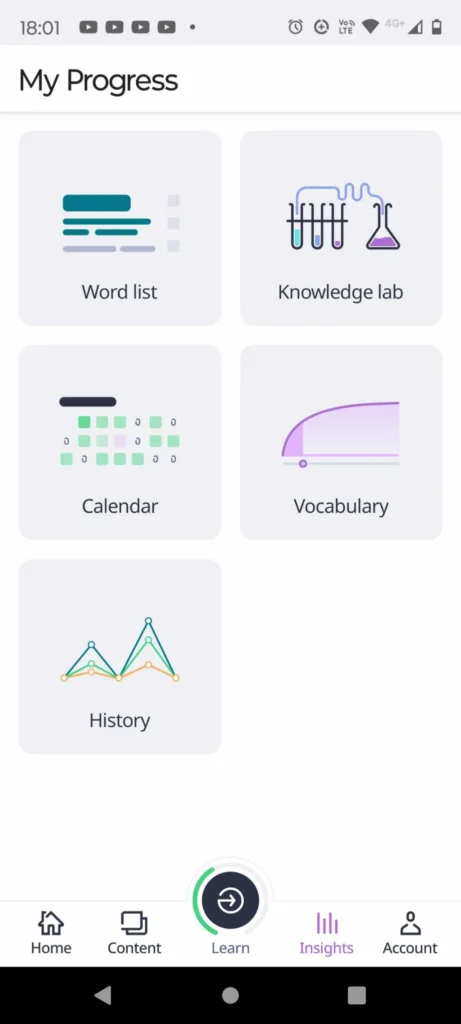
Lingvist is an AI-powered language-learning tool that promises to help people learn a new language faster than other apps. The software covers all the main areas in a course curriculum, like reading, listening, grammar, and speaking, plus AI assessments and reviews.
The platform offers courses in 14 languages for individual learners, educators, and even businesses.
I’ve tested Lingivst to see if I could learn Italian faster, but in my opinion, their approach rushes through the curriculum and skips some elementary steps. For example, I started as a beginner, but in my first lesson I was asked to translate words and phrases and write them down (!), without any visual hint. That was quite a surprise. Luckily, I already knew those words, as I watched many cartoons and films in Italian as a child. But if I was a complete beginner, I would have had no idea whatsoever. Therefore, I simply can’t see how one can progress fast with this app…But rather miss some fundamental steps and get confused.
One feature that caught my eye is the Custom Decks, where you can upload your texts and Lingvist will create a lesson out of it.
Pros:
- AI-powered repetition algorithm to help you memorize new words.
- Real-time feedback and personalized vocabulary lists, so you can learn a new phrase, words or even some idioms and write them down in the list.
- Courses in 14 languages.
Cons:
- Poor user-experience. It lacks visual support and stimulation.
- No gamification which means it’s not really entertaining.
- Inaccurate assessment of a user’s level.
- Fast-forward method; skips elementary steps and jumps into writing and translation.
- No live tutoring available.
Mondly
🏆 Best for speaking accurately and confidently



Mondly by Pearson is a complex language learning platform that focuses on speaking and pronunciation. Mondly employs AI-powered language recognition technology to help learners grasp words fast and confidently start speaking in a new language.
This platform offers courses in 41 languages, and the great thing about it is that you can learn a new language from your native language. Not from Engish!
I tested the tool for Persian (or Farsi), in a free trial to see what comes up. The features were limited, but still enough to get an idea of its environment, and honestly, I was impressed. I went through a few lessons and even learned a few basic words. I never thought I would ever speak Persian, but I did, I spoke a few Persian words!
Premium subscriptions include some amazing features: Mondly AR and Mondly VR. There’s no human tutor at Mondly, but you can learn your chosen language from AR virtual teachers. All using your phone and a Mondly subscription. With Mondly VR, you can travel the world and have real-life conversations with native virtual people.
Pros:
- AI-powered speech recognition technology.
- With Mondly AR you can get a virtual private language tutor.
- With Mondly VR you can virtually travel the world, meet virtual locals and have real-life conversations.
- Grammar features and conjugation tables to master speaking confidently.
- Real-life lesson topics.
- Covers 41 languages.
Cons:
- No human tutoring available.
- Lacks comprehensive learning resources.
LingoDeer
🏆 Best for learning Asian languages



LingoDeer is a fun language learning tool with courses in 14 languages, covering the main European and main Asian languages. However, their focus is on the Asian languages.
LingoDeer is different than other apps for language courses. Their method places grammar as the foundation and center of learning a new language. While most apps offer lessons that help students learn words and build their vocabulary, LingoDeer teaches lessons where grammar is emphasized alongside vocabulary, pronunciation, and writing.
If we’re being honest and look back to how we learned our first foreign language in school, we realize that in the first few years of study, the teacher annoyed us with complex grammar rules for us to be able to build phrases and have conversations. Grammar is the backbone of a language.
I’ve tested LingoDeer for Japanese to see how the process works. It all starts with the alphabet (as it should), and then you’re guided towards the lessons. Each lesson is packed full with resources for understanding the unique characteristics of a language. For example, the Japanese language uses a combination of 3 alphabets to form words and sentences. The sentence structure (or word order) is completely different than European languages, because the verb comes at the end.
Pros:
- Gamified lessons and tests that keep students engaged.
- In-depth study of grammar.
- Audio lessons read by native speakers.
- The possibility to customize your learning environment.
Cons:
- Could use more resources for language learning.
- No live tutoring.
- No live classes.
HelloTalk
🏆 Best for conversations with native speakers
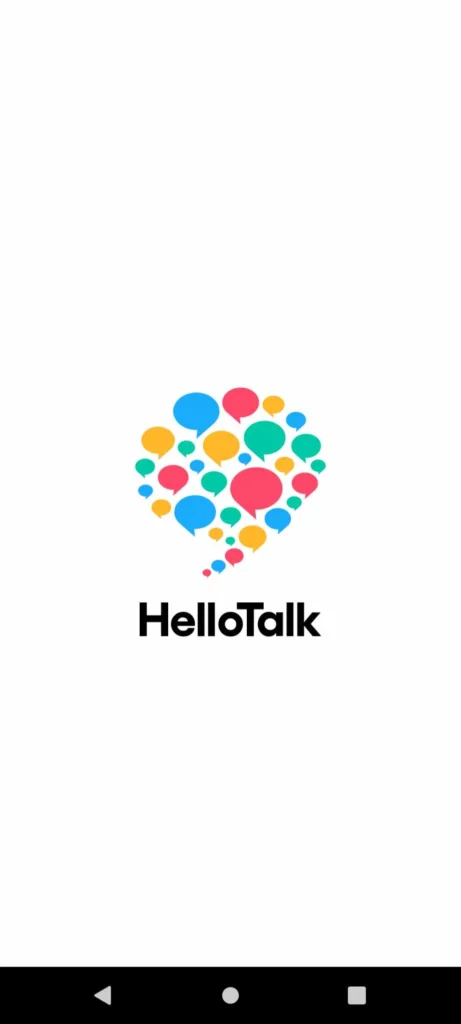
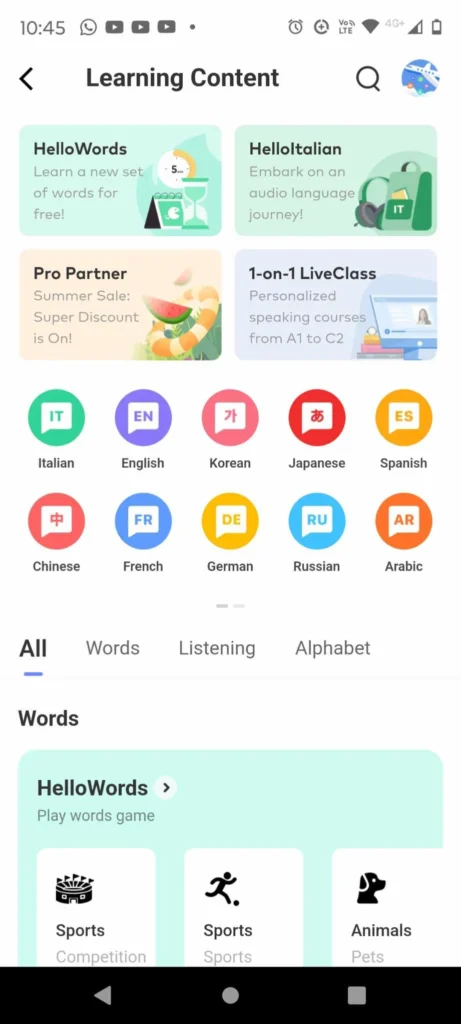
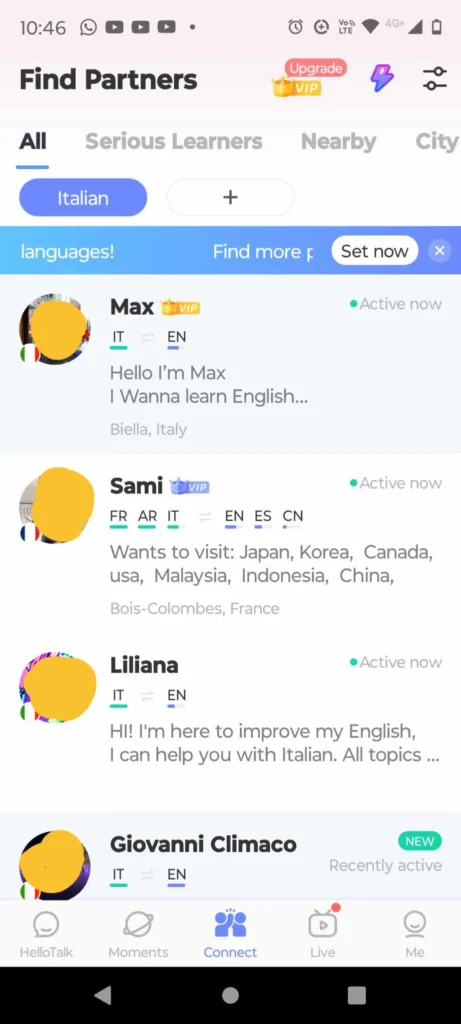
HelloTalk is a unique platform that allows you to practice a new language through conversations with native people. There’s a prerequisite though: you need to acquire the language first somewhere else as their language lessons are pretty basic.
My first feeling when I entered the app was that I got on a social network. And that’s true. HelloTalk is a language-learning social network app.
Once you pick your language, you can immediately invite someone to o conversation, or join a live group discussion in a Voiceroom. You can either chat via text, voice calls, or video calls or attend a Voiceroom group discussion.
If you want to have regular conversations with the same person, you need to pay extra for the Pro Partner feature.
HelloTalk is among the best language-learning apps for speaking.
Pros:
- The possibility to connect with native people and practice your chosen language through text, voice, video calls, and interactive Voicerooms.
- Live group discussions.
- 1 on 1 live classes with certified teachers.
- Audio resources with scripts in both languages (your native language and your study language), and vocabulary lists.
- Students can share moments just like on social media. Moments are highlighted achievements shown in other people’s feeds.
Cons:
- Lessons don’t provide learners with the fundamentals of a new language.
- Conversations and language acquisition depend on the users you interact with.
The benefits of a language learning app
If you’re still in doubt, have a look at these five benefits of using a specialized platform for language education:
1. Greater Convenience: With language learning apps, you can access learning materials from anywhere, anytime. You can study on the bus, in line at the store, attend online class groups while on vacation, or even in the comfort of your own home.
2. More Affordable: Many language learning apps are free or offer a subscription-based model that makes them much more affordable than traditional language classes.
3. Structured Learning: Most language learning apps have built-in lessons and activities that keep you on track and motivated to learn.
4. Fun and Engaging: With interactive features like games and quizzes, as well as audio recordings of native speakers, language learning apps make staying engaged with the material more accessible.
5. Personalized Learning: Many language learning apps offer personalized learning plans that consider your individual goals and learning style.
Conclusion
If you’ve decided you want to embark on a new adventure and start learning a new language, take a pause and write down your needs, and reflect on your learning style and personality. Then, try each language learning app to see which one meets your needs best.
You may want to consider their teaching method, interface, resources, and possibility of live tutoring or online classes.
And remember, the best way to master a language is to complement app learning with comprehensive resources like books, films, magazines, and conversations with native people.
Sayonara!
See also: What is the strategy for social media marketing in 2023?











